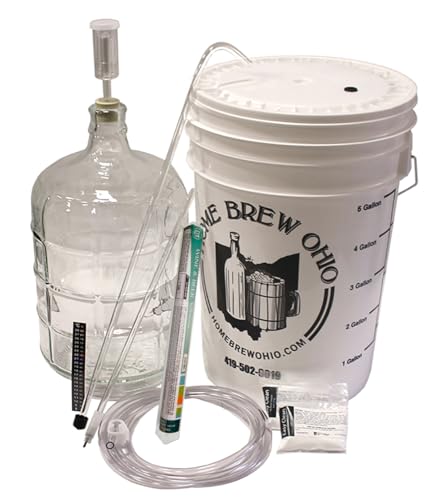On 12/15 we racked the extra carboys of Chelois and Chambourcin. The yield on both batch was enough that in addition to the 55 liter barrels, we have two carboys of each wine. These have been untouched since 10/26/2024.
I screwed up when filling the barrels -- I added K-meta to both barrels, with MLF underway. The extra carboys received no K-meta, so I have hopes the MLF completed.
Chelois:
Carboy 1 is slightly acidic. Carboy 2 is more mellow. The barrel is more acidic than either, which makes sense since I added K-meta to it.
Today’s effort is to rack the wines off the lees AND to add finishing tannins. We have 3 different tannins, that will be used in different containers. We read the description of each tannin and decided how to use them. We racked the wine back into 19 and 12 liter carboys, a 4 liter jug, plus three 750 ml wine bottles.
The dosages are based upon the vendor recommendations, going approximately with the median dosage (half way between minimum and maximum dosages).
- barrel: Quentanin Sweet, 2.1 g
- 19 liter carboy: Tannin Estate, 5.0 g
- 12 liter carboy: Tannin Riche Extra, 1.0 g
- remainder: no finishing tannins
The plan is to taste test the 4 variations in March. The vendor docs say integration takes 6 weeks, so that should be done by the end of January, and we'll give it more time. Or ... maybe we'll do it at the February topup. Or both ...
Barrel topup was 1.0 liters.
Chambourcin:
The Chambourcin is more acidic than the Chelois. This wine was in a 19 and a 23 liter carboy. The 23 liter carboy was acidic enough that we added 1 tsp potassium carbonate to the Brute to reduce the acid. I doubt this will be enough to address the acid, but we'll see what difference it makes.
Because we lacked another free 12 liter carboy, we racked back into a 23 liter carboy, three 4 liter jugs, and four wine bottles. We did not use the Tannin Riche Extra here.
- barrel: Quentanin Sweet, 2.1 g
- 23 liter carboy: Tannin Estate, 5.5 g
- remainder: no finishing tannins
Taste testing will be concurrent with the Chelois.
We topped the barrel with
4.0 liters of wine. I must have completely misjudged the level in the barrel when filling it. I'm disappointed in myself, but the wine tasted fine, so apparently no harm done.
Next Steps:
At the January topup (weekend before or after 15th) I'll take pH readings and we'll do the acid chromatography. As noted in the last post, we'll test all at once to see what we have.
My cellar has been hovering between 55-59 F (13-15 C), and the Vidal is clearly dropping acid. I have hopes the reds will as well. I'll see it in the carboys if that happens.
I'm concerned about the acid levels of the reds. We do not want to backsweeten, but will consider a slight backsweetening if necessary. If so, we'll have to treat the wines with lysozyme because of the MLB.
Using potassium carbonate and/or calcium carbonate is another option. I've already added some K-carbonate, and in a few weeks we'll see what that tastes like.
And ... I have another test in mind. We have 2 carboys each of the whites, so I'm leaning towards treating one of each batch with bentonite. I'd like to see if it has any effect on color or clarity, and on aroma and flavor. If it's positive, we'll treat the second carboys as well.





























































